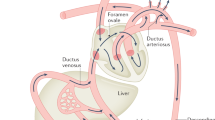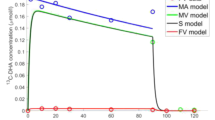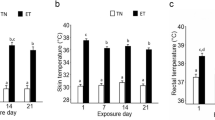Abstract
APPROXIMATELY 75% of foetal oxygen consumption of sheep can be accounted for by the uptake of glucose from the umbilical circulation1–3 and catabolism of amino acids4. The contribution to foetal energy metabolism of exogenous long-chain fatty acids5 and fructose1 seems to be negligible. We report now that the placenta normally provides lactate for the foetus, in sufficient quantities to account for 25% of foetal oxidative metabolism. This finding invalidates the assumption that under normal physiological conditions there is a net flux of lactate from foetus to mother. The assumption seemed reasonable in the past because the concentration of lactate in foetal blood is greater than in maternal blood and because of the formerly prominent hypothesis that anaerobic metabolism is very active in foetal life.
This is a preview of subscription content, access via your institution
Access options
Subscribe to this journal
Receive 51 print issues and online access
$199.00 per year
only $3.90 per issue
Buy this article
- Purchase on Springer Link
- Instant access to full article PDF
Prices may be subject to local taxes which are calculated during checkout
Similar content being viewed by others
References
Tsoulos, M. G., Colwill, J. R., Battaglia, F. C., Makowski, E. L., and Meschia, G., Am. J. Physiol., 221, 234–237 (1971).
James, E. J., et al., Pediatrics, 50, 361–371 (1972).
Boyd, R. D. H., Morriss, F. H., Meschia, G., Makowski, E. L., and Battaglia, F. C., Am. J. Physiol., 225, 897–902 (1973).
Gresham, E. L., et al., Pediatrics, 50, 372–379 (1971).
James, E. J., Meschia, G., and Battaglia, F. C., Proc. Soc. exp. Biol. Med., 138, 823–826 (1971).
Meschia, G., Makowski, E. L., and Battaglia, F. C., Yale J. biol. Med., 42, 154–165 (1969–1970).
Olsen, C., Clin. chim. Acta, 33, 293–300 (1971).
Murphey, J. B., and Hawkins, J. A., J. gen. Physiol., 8, 115–130 (1925).
Bell, B., Cunningham, L., Jowett, M., Millet, H., and Brooks, J., Br. med. J., 126–131 (1926).
Loeser, A., Archs Gynak., 148, 118–148 (1932).
Villee, C. A., J. biol. Chem., 205, 113–123 (1953).
Ginsburg, J., and Jeacock, M., Am. J. Obstet. Gynec., 90, 794–799 (1964).
Fieller, E. C., Q. Jl. Pharm., 17, 117–123 (1944).
Author information
Authors and Affiliations
Rights and permissions
About this article
Cite this article
BURD, L., JONES, M., SIMMONS, M. et al. Placental production and foetal utilisation of lactate and pyruvate. Nature 254, 710–711 (1975). https://doi.org/10.1038/254710a0
Received:
Revised:
Issue Date:
DOI: https://doi.org/10.1038/254710a0
This article is cited by
-
Fetoplacental oxygen homeostasis in pregnancies with maternal diabetes mellitus and obesity
Nature Reviews Endocrinology (2022)
-
Cytotrophoblast, Not Syncytiotrophoblast, Dominates Glycolysis and Oxidative Phosphorylation in Human Term Placenta
Scientific Reports (2017)
-
LDH (Lactate Dehydrogenase): A Biochemical Marker for the Prediction of Adverse Outcomes in Pre-eclampsia and Eclampsia
The Journal of Obstetrics and Gynecology of India (2016)
-
Utilization of yolk reserves during post-embryonic development in three teleostean species: the sea bream Sparus aurata, the sea bass Dicentrarchus labrax, and the pike-perch Stizostedion lucioperca
Marine Biology (1996)
Comments
By submitting a comment you agree to abide by our Terms and Community Guidelines. If you find something abusive or that does not comply with our terms or guidelines please flag it as inappropriate.



